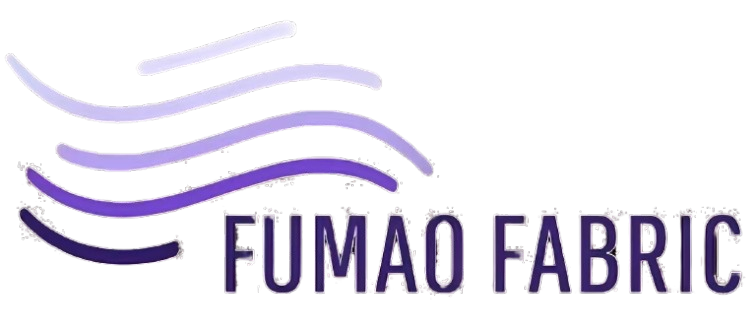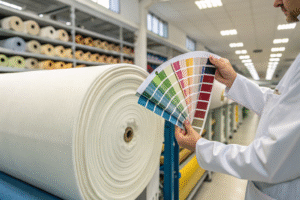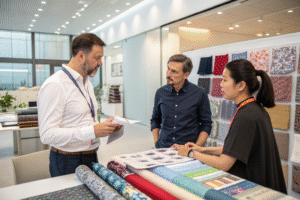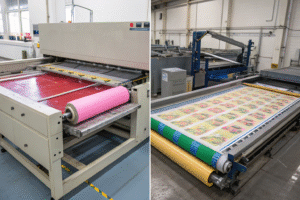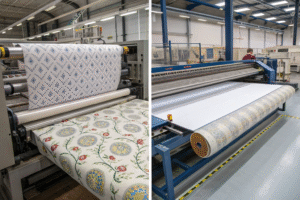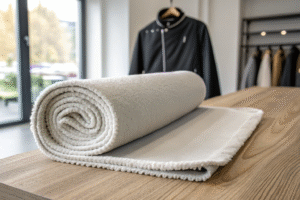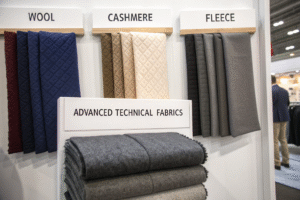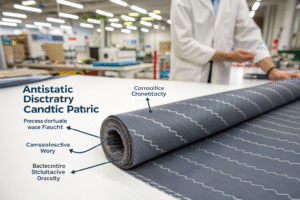In the age of skin-conscious consumers and SPF obsession, swimwear alone isn’t enough. Stylish and protective cover-ups are now an essential part of beachwear lines. But not all fabrics block the sun equally—enter UPF 50+ textiles.
The best UPF 50+ fabrics for swimwear cover-ups include tightly woven polyester blends, micro-modal knits, bamboo-rayon, polyamide-elastane blends, and specially finished cottons—each tested and rated to block 98% or more of UVA and UVB rays.
At Fumao Fabric, we supply certified sun-protective fabrics to swimwear and resort brands worldwide. If your next line needs built-in UV defense without sacrificing drape, softness, or style, here’s what to look for.
Why Is UPF Rating More Important Than SPF in Fabric?
Many brands still confuse SPF with UPF. SPF measures how long skin can be exposed to sun before burning, while UPF (Ultraviolet Protection Factor) measures how well fabric blocks both UVA and UVB rays.
A fabric rated UPF 50+ allows only 1/50th of UV radiation through—blocking over 98% of harmful rays—making it critical for cover-ups that protect sun-exposed areas like shoulders, arms, and upper back.
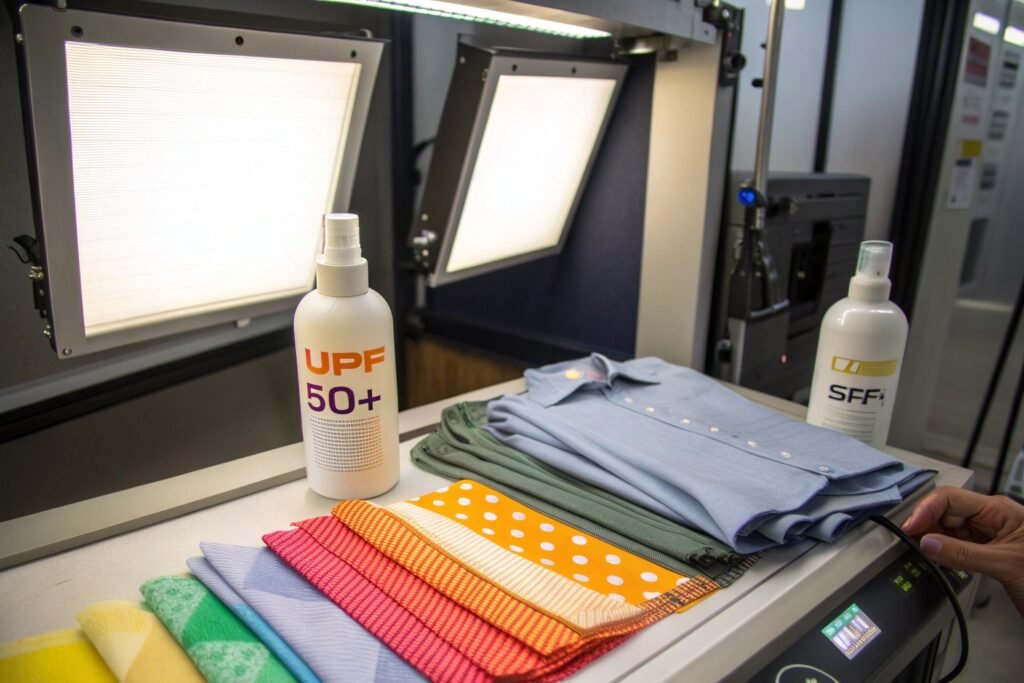
What Makes a Fabric Truly UPF 50+?
Factors include:
- Tight weave structure (less light penetration)
- Fiber type (synthetics like polyester block more UV)
- Color (darker shades absorb more UV)
- Finishing (UV-inhibiting chemical treatments)
Reputable testing labs follow AATCC 183 or AS/NZS 4399 standards. We test all Fumao UPF fabrics using CNAS-certified equipment aligned with both.
Is UPF 50+ Permanent?
Not always. Some UPF ratings are inherent to the fiber (e.g. tightly woven polyester), while others are chemical finishes that may wash off. We recommend selecting inherently protective knits or treated fabrics with >40 wash durability as verified by labs like Intertek or SGS.
What Fabric Types Offer the Best UV Protection and Style?
Stylish doesn’t mean unsafe. The best UPF 50+ fabrics combine aesthetic drape, breathability, and softness with high sun protection. Depending on your target buyer—youthful, minimalist, luxury resort—there’s a match.
Top fabric types for UPF swimwear cover-ups include polyester chiffon, bamboo-rayon knits, nylon/spandex mesh, modal blends, and crepe weaves—all tested for both UV resistance and fashion suitability.
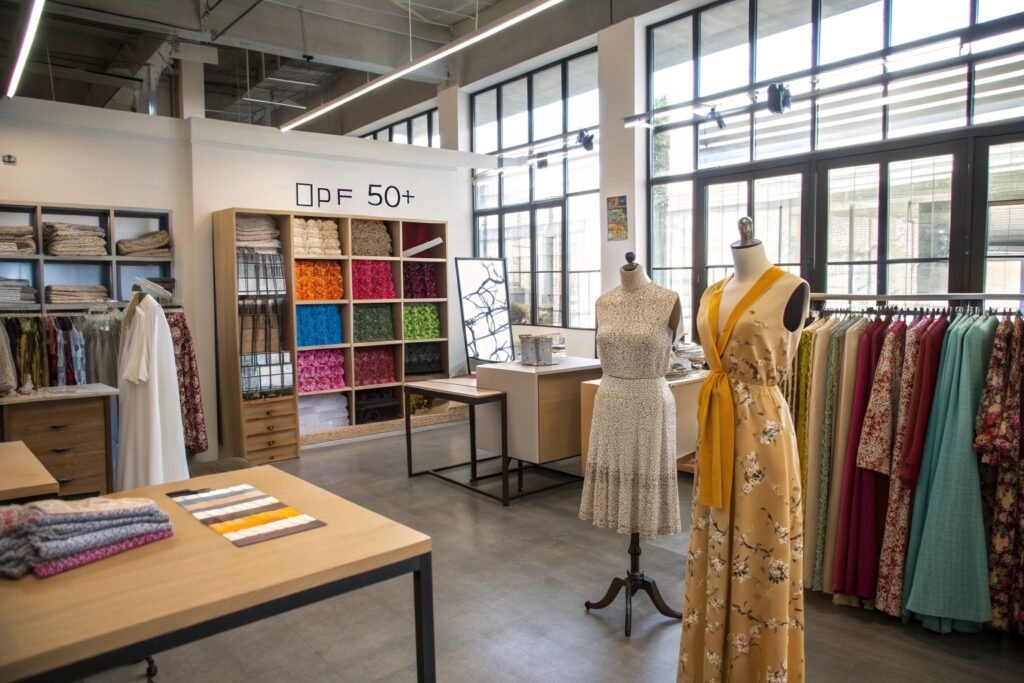
Is Polyester the Best Synthetic for UPF Cover-Ups?
Yes—polyester naturally blocks UV due to its structure. Tightly woven polyester chiffons or satin-finish poly-microfiber offer great drape with built-in protection. They’re also:
- Quick-drying
- Lightweight
- Dye-friendly
- Moisture-wicking
Fumao’s UPF 50+ polyester voile is a favorite among resort brands in Florida and Greece, especially for kaftans and long shirts.
What About Natural-Feel Fabrics Like Bamboo or Modal?
Bamboo-rayon and micro-modal provide luxury softness and stretch with surprising UV protection when knitted tightly. We supply UPF 50+ bamboo jersey for bohemian-inspired cover-ups and maternity beachwear.
Be sure the fabric is lab-tested—many untreated natural fibers like cotton or linen offer only UPF 5–15, according to Skin Cancer Foundation.
What Are the Best Knit and Weave Constructions for UV Protection?
Weave and knit structure matter just as much as fiber content. A loosely woven cotton muslin won’t protect your skin—even if dyed dark. Instead, choose denser constructions that offer coverage without weight.
Double knits, high-gauge warp knits, and interlock jerseys typically provide better UPF performance than loose weaves like gauze or voile.
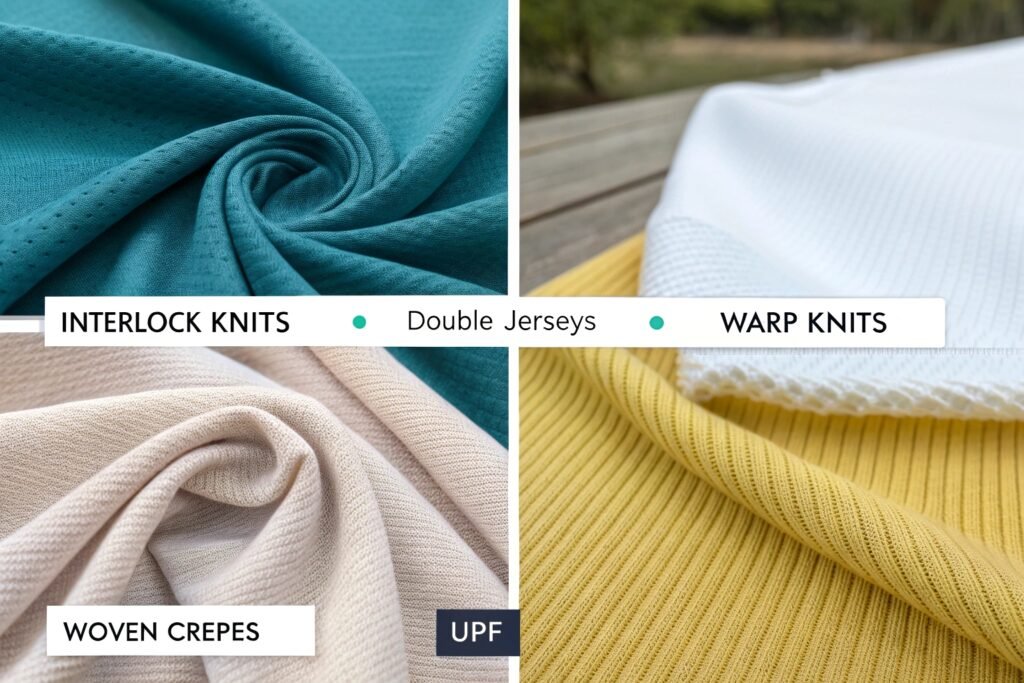
What Knit Structures Are Ideal?
- Interlock jersey – tight, smooth face, stretchy
- Double knit – two-layered structure, excellent shape retention
- Warp knit tricot – stable, snag-resistant, widely used in rashguards
- Spacer knit – adds airflow and thickness
For premium lines, we also offer bamboo-modal double knits with UPF 50+ and peach-finish handfeel. They’re ideal for long sleeve tunics or hoodie cover-ups.
Do Woven Fabrics Work for Cover-Ups?
Yes, if tightly woven and properly finished. Our UPF 50+ poly crepe and cotton/polyester poplin are often used in resort robes, pareos, and long sarongs. Add DWR or anti-odor finishes for higher-end retail applications.
We also offer yarn-dyed stripe versions where contrast color threads don’t reduce UV performance—a concern often overlooked in design sourcing.
How to Source and Test UPF 50+ Fabrics Efficiently?
Sourcing UPF 50+ fabrics isn’t just about picking a fiber and color. You need documentation, testing durability, and supplier reliability—especially when retail labeling regulations are involved.
To source smartly, request AATCC 183 or AS/NZS 4399 test reports, validate wash durability, and confirm UPF 50+ rating is maintained post-print and post-finish.
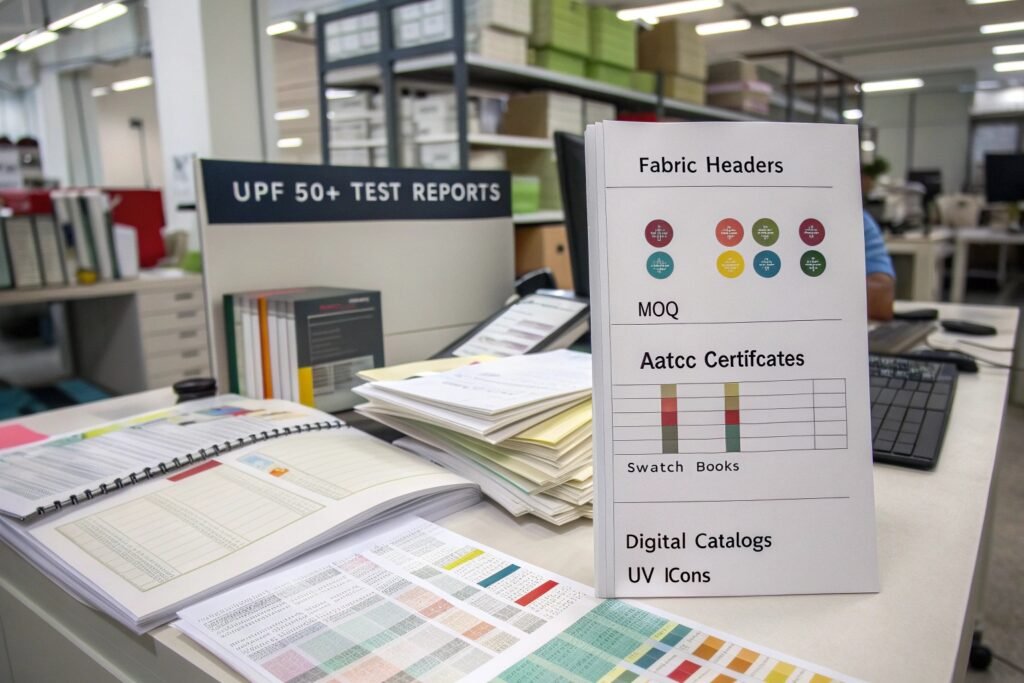
What to Ask Your Supplier?
- What is the UPF rating (lab-certified)?
- Which standard was used (AATCC 183, AS/NZS 4399)?
- How many washes does it last?
- Is UPF inherent or coating-based?
- Are reports from a third-party lab?
We provide CNAS-lab test sheets with every fabric lot and embed QR codes into shipping labels so buyers can access them anytime. For U.S. buyers, this supports FTC sun-protection labeling guidelines.
What Are Typical MOQ and Lead Times?
- MOQ: 300–500 meters per color
- Lab dip: 7–10 days
- Lead time: 15–20 days ex-mill
- Custom finishes: Anti-chlorine, anti-pilling, brushed, UV stabilizers
We also support low-MOQ programs for niche brands in Australia and California launching beachwear capsule collections.
Conclusion
UPF 50+ isn’t a feature—it’s a foundation for protective beachwear. From polyester chiffons to bamboo knits, the best cover-up fabrics must blend function and fashion while shielding skin from sun damage.
At Fumao Fabric, we make it easy for brands to source lab-tested, beautifully draping UPF 50+ textiles ready for digital printing, custom dyeing, and global shipment. Let your next swimwear line be as protective as it is stylish.
